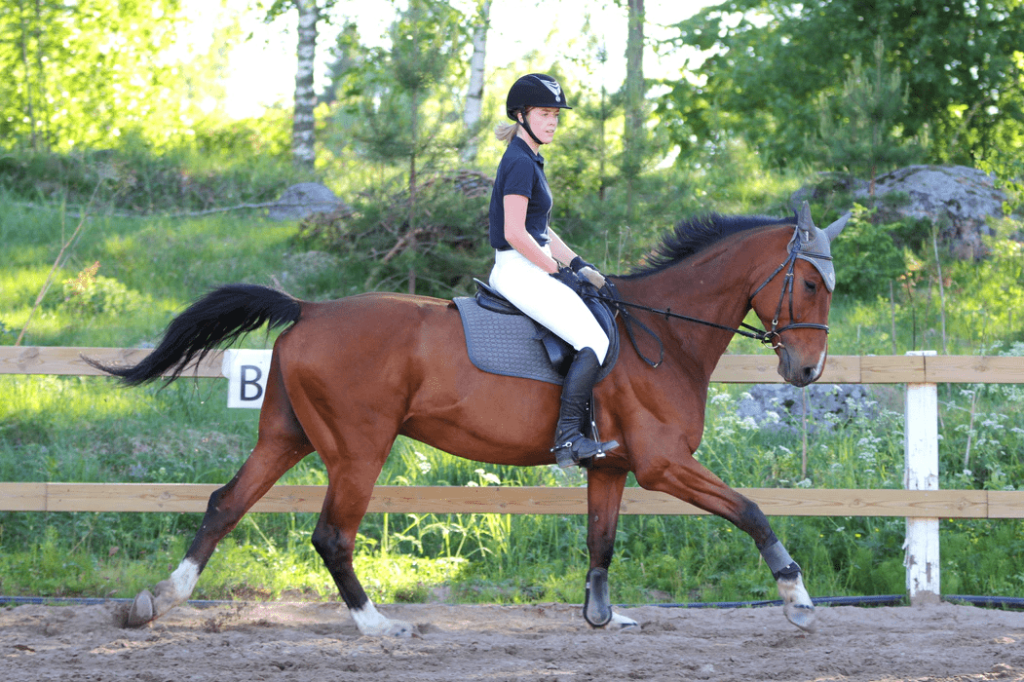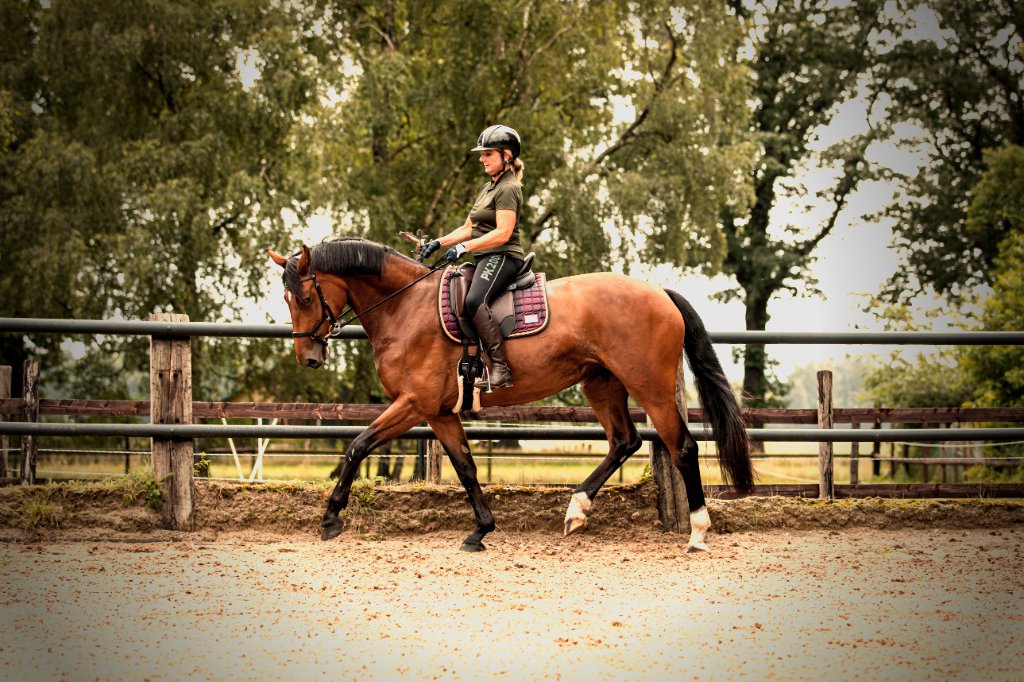Looking to enhance your balance while having a great time? Look no further than horseback riding! Horseback riding not only provides a thrilling and enjoyable experience but also has a significant impact on improving your balance. In this blog, we will explore the various aspects of horseback riding and how it positively affects your balance. From the benefits of core strength to the development of coordination, horseback riding offers a unique and exciting way to improve your balance skills. So saddle up and get ready to discover the incredible impact that horseback riding can have on your balance!
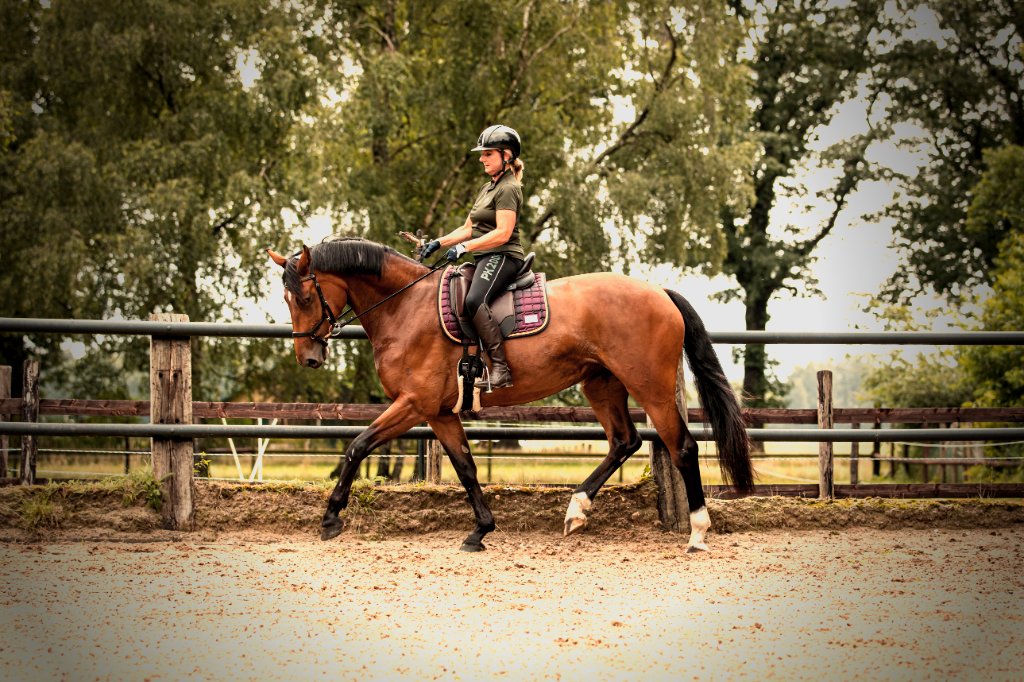
The Benefits of Horseback Riding on Balance
Are you looking for a fun and exciting way to improve your balance? Look no further than horseback riding! Not only is it a thrilling activity, but it also offers numerous benefits for your balance and stability. In this article, we will explore how horseback riding can improve your core strength, enhance your coordination, and increase your stability and balance.
Improved Core Strength
One of the major benefits of horseback riding is the improvement it brings to your core strength. When you ride a horse, you engage numerous muscles in your core to maintain your balance and stability in the saddle. Muscles such as your abdominals, obliques, and back muscles are all activated as you adjust your position to the horse’s movements. Over time, this constant engagement of your core muscles leads to increased strength and stability in your midsection.
Enhanced Coordination
Horseback riding requires a high degree of coordination between your body and the horse’s movements. As you ride, your body has to adapt to the changing rhythm and motion of the horse. This constant adjustment helps to improve your coordination skills, as you learn to align your movements with the horse’s strides. By practicing coordination on horseback, you can develop better body awareness and fine-tune your ability to synchronize your movements with another living being.
Increased Stability and Balance
Perhaps the most obvious benefit of horseback riding is the improvement it brings to your overall stability and balance. As you ride, your body constantly makes micro-adjustments to maintain its equilibrium in the saddle. This constant balancing act strengthens your muscles and trains your body to find its center of gravity. Over time, your balance will improve, and you will have a greater sense of stability on and off the horse.
The Role of the Muscles in Balance on Horseback
To understand how horseback riding improves your balance, it’s important to explore the role of different muscles in maintaining stability on horseback.
Engagement of Core Muscles
Your core muscles play a vital role in maintaining balance on horseback. The muscles in your abdomen and lower back work together to stabilize your torso and pelvis as you ride. By engaging your core muscles, you create a strong and stable foundation from which you can effectively control your movements on the horse.
Activation of Leg Muscles
Your leg muscles also contribute significantly to your balance on horseback. The muscles in your thighs and calves help you maintain a secure and steady lower leg position. These muscles work in harmony with your core muscles to provide a solid base of support, preventing you from being easily unseated by the horse’s movements.
Utilization of Arm and Upper Body Muscles
While your core and leg muscles play a primary role in balance on horseback, your arm and upper body muscles are also engaged to maintain stability. Your arms help to absorb the horse’s movements and make minor adjustments to your position. The muscles in your shoulders and upper back contribute to your overall posture and help you maintain a relaxed and centered upper body.
The Importance of Posture and Alignment
In addition to engaging the right muscles, maintaining proper posture and alignment is crucial for achieving good balance on horseback.
Maintaining a Neutral Spine
A neutral spine is essential for maintaining balance and stability on horseback. It refers to the natural curves of your spine being aligned in their anatomically correct positions. By keeping your spine in a neutral position, you distribute your weight evenly and allow your core muscles to work effectively. This alignment also prevents stress and strain on your back, minimizing the risk of injury.
Aligning the Shoulders, Hips, and Heels
To achieve optimal balance, it’s important to align your shoulders, hips, and heels in a straight line. This alignment helps you maintain a stable and centered position on the horse. Your shoulders should be relaxed and rolled back, your hips should be square and level, and your heels should be positioned directly beneath your hips. By aligning these key points, you create a balanced and secure foundation in the saddle.
Finding Balance through Proper Alignment
Proper alignment is not only essential for maintaining balance, but it also allows you to communicate effectively with your horse. When your body is correctly aligned, you can give clear and precise cues to your horse, enhancing your communication and creating a harmonious partnership. By focusing on your posture and alignment, you can improve your balance and enhance your riding performance.
Exercises to Improve Balance for Horseback Riding
If you’re looking to enhance your balance for horseback riding, incorporating specific exercises into your routine can be highly beneficial. Here are some exercises that can help improve your balance:
Core Strengthening Exercises
To strengthen your core muscles, exercises such as planks, Russian twists, and bridges are highly effective. These exercises engage your abdominal and back muscles, helping to build strength and stability in your core. A strong core is crucial for maintaining balance on horseback, so incorporating these exercises into your fitness routine can significantly improve your riding skills.
Balance Training on Unstable Surfaces
Exercises performed on unstable surfaces, such as stability balls or balance boards, can also help improve your balance. The instability of these surfaces challenges your muscles to work harder to maintain stability, effectively training your body to adapt to different types of movement. By incorporating balance training into your workouts, you can strengthen the muscles necessary for maintaining balance on horseback.
Specific Riding Drills for Balance Enhancement
In addition to off-horse exercises, there are specific riding drills that can target balance enhancement. Exercises such as riding without stirrups, practicing transitions, and riding figures of eight can all contribute to improving your balance in the saddle. These drills challenge your muscles and proprioception, helping you develop a more secure and balanced seat.
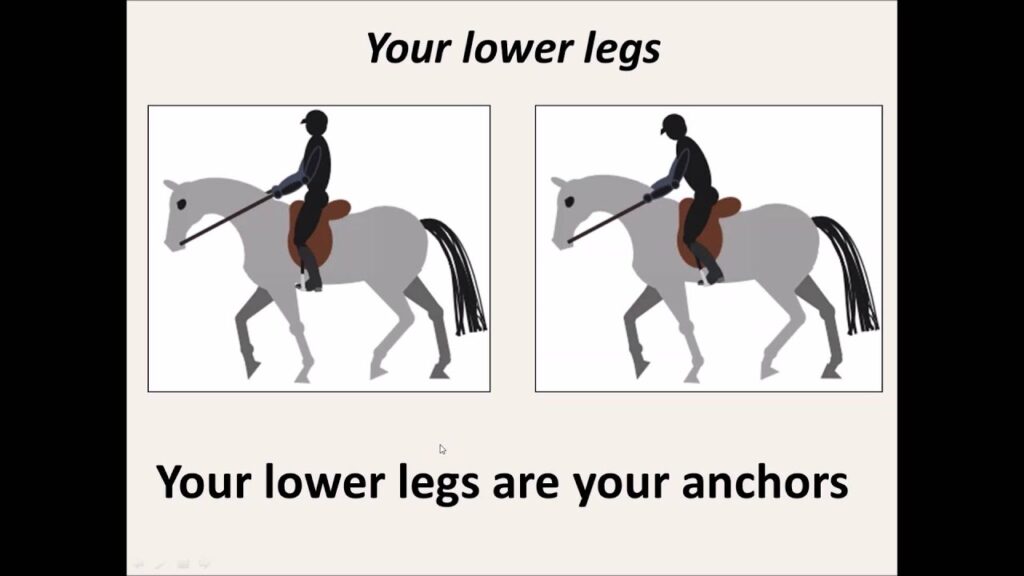
The Role of Balance in Different Riding Disciplines
While balance is important in all riding disciplines, its significance varies depending on the specific discipline. Let’s explore the role of balance in three popular disciplines:
Dressage and the Importance of Balance
In dressage, balance is of utmost importance. Dressage riders strive for harmonious communication and seamless partnership with their horses. Balance enhances the rider’s ability to execute precise and nuanced movements, such as lateral work or flying changes. A well-balanced rider can effectively communicate their aids and maintain an elegant and collected posture, influencing their horse’s balance and performance.
Jumping and Stability in the Saddle
Jumping requires a high level of stability and balance to navigate obstacles safely and effectively. Riders must maintain their position over fences and adjust their balance dynamically as they approach and land from jumps. Balance is essential for maintaining a secure and centered seat, allowing riders to stay in sync with their horses’ movements and provide the necessary support for a successful jump.
Trail Riding and Navigating Uneven Terrain
Trail riding often involves traversing uneven terrain and natural obstacles. Balance plays a vital role in keeping riders secure in the saddle and maintaining control over their horses. On challenging trails, riders must adapt their balance to the horse’s movements and make constant adjustments to stay centered and stable. A well-balanced rider can navigate uneven terrain with ease and minimize the risk of accidents or falls.
Common Balance Issues on Horseback
Even experienced riders can face balance issues from time to time. Here are some common balance issues that riders may encounter:
Leaning to One Side
Leaning to one side is a common balance issue that can affect riders of all skill levels. This imbalance may occur due to muscle weakness, asymmetrical riding habits, or improper saddle fit. Leaning to one side puts uneven pressure on the horse and can hinder effective communication. Addressing this balance issue involves strengthening weaker muscles, correcting asymmetrical habits, and ensuring a properly fitted saddle.
Difficulty Sitting Deep in the Saddle
Maintaining a deep seat in the saddle can be challenging for riders, particularly when the horse’s movements become more energetic or during faster gaits. Sitting deep requires a strong core, supple hips, and relaxed muscles. Riders who struggle with sitting deep may feel unbalanced or disconnected from their horses. Regular practice of exercises that promote flexibility and strength can help riders develop a more secure and stable seat.
Loss of Balance during Transitions
Transitions between gaits or movements can disrupt a rider’s balance, especially if they are not prepared or anticipate the horse’s changes. Losing balance during transitions can result in unseating or ineffective aids. To improve balance during transitions, riders can practice maintaining a strong and balanced position throughout the movements and focusing on their core engagement.
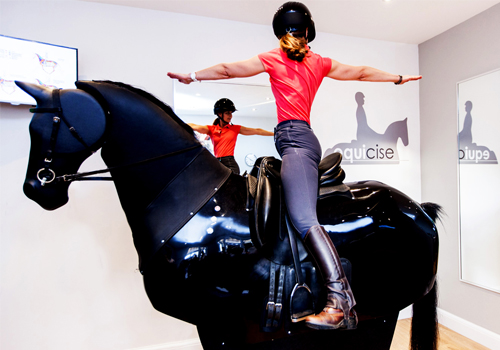
How to Improve Balance through Proper Riding Technique
Proper riding technique plays a crucial role in improving balance on horseback. By incorporating the following principles into your riding, you can significantly enhance your balance and stability:
Maintaining a Solid Lower Leg Position
A solid lower leg position is essential for maintaining balance. Your legs should be relaxed and long, with your weight flowing down through your heels. This position provides stability and allows you to better absorb the horse’s movements. By developing a strong lower leg position, you create a secure foundation and enhance your overall balance.
Using the Seat and Core for Stability
Your seat and core play a vital role in providing stability and balance. By sitting deeply in the saddle and engaging your core muscles, you create a strong and centered seat. Your seat bones should connect with the saddle and move with the horse, allowing you to follow their movements seamlessly. By using your seat and core effectively, you can maintain balance and communicate with your horse more efficiently.
Effectively Using the Reins for Balance
While your core and legs primarily stabilize your balance, the reins can also contribute to maintaining stability. By having a light and elastic contact with the horse’s mouth, you can use the reins as an additional aid for balance. However, it’s important to avoid relying solely on the reins, as this can create tension and inhibit your horse’s natural movement. Effective rein usage should complement your overall balance and aid in communication with your horse.
The Impact of Saddle Fit on Rider Balance
Saddle fit plays a significant role in rider balance and comfort. An improperly fitted saddle can cause discomfort, negatively affect your position, and compromise your balance. Here are some factors to consider regarding saddle fit:
Importance of a Properly Fitted Saddle
A properly fitted saddle is crucial for both horse and rider. It should distribute the rider’s weight evenly and allow for freedom of movement. An ill-fitting saddle can create pressure points on the horse’s back, leading to discomfort and potential behavior issues. For the rider, an ill-fitting saddle can tilt their position, causing imbalance and difficulty maintaining stability. Working with a professional saddle fitter can help ensure a proper fit for optimal balance and comfort.
Different Saddle Designs and their Influence on Balance
Various saddle designs have different effects on rider balance. For example, a deep-seated saddle with knee rolls can provide a more secure feeling, especially for riders who struggle with balance. On the other hand, a flatter or more minimalist saddle can promote a closer connection with the horse and enhance balance through a lighter seat. The ideal saddle design depends on the rider’s preferences and body type, as well as the discipline they participate in.
Addressing Saddle Fit Issues
If you suspect that your saddle is causing balance issues, it’s essential to address the problem promptly. Consult with a professional saddle fitter to evaluate the fit and make any necessary adjustments. A well-fitted saddle can significantly improve your balance and riding experience, allowing you to focus on developing your skills and enjoying your time in the saddle.
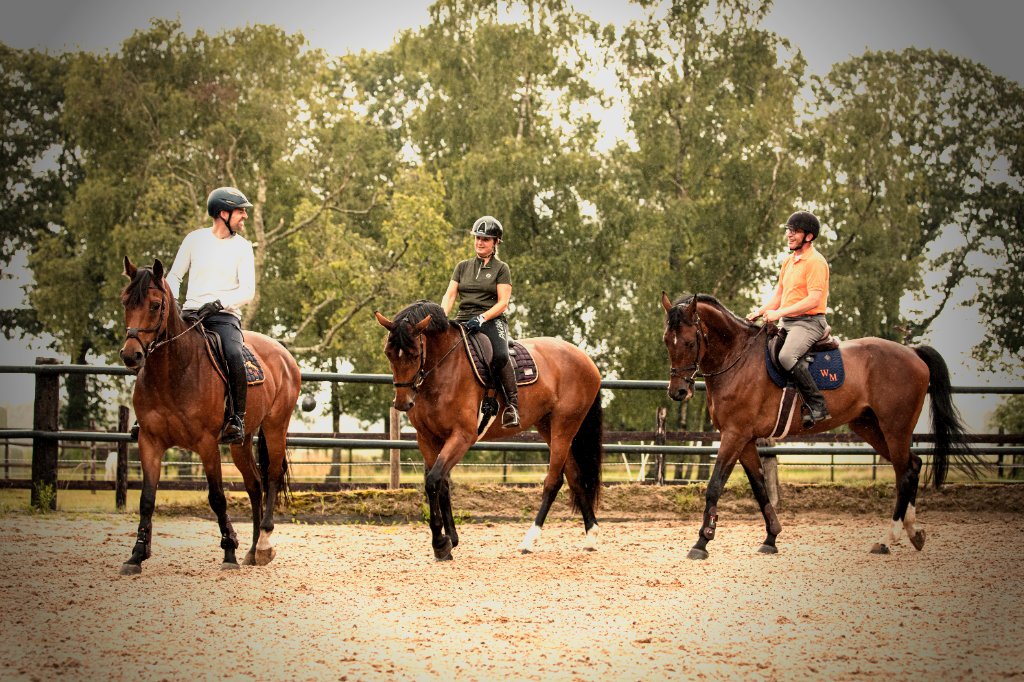
Exercises and Activities for Off-Horse Balance Improvement
Improving your balance for horseback riding doesn’t have to be limited to activities in the saddle. Here are some off-horse exercises and activities that can help enhance your balance:
Yoga and Pilates for Core Stability
Yoga and Pilates are excellent practices for improving core stability and balance. These disciplines focus on strengthening and lengthening your muscles, enhancing body awareness, and promoting overall physical well-being. By incorporating yoga poses and Pilates exercises into your fitness routine, you can develop a strong core, improve your balance, and enhance your riding performance.
Balance Training with Gym Equipment
Gym equipment such as stability balls, balance boards, and Bosu balls can be used to create a variety of balance exercises. These tools challenge your muscles and proprioception, helping to improve your stability and balance. Performing exercises such as single-leg squats, standing on one leg on an unstable surface, or performing lateral movements can all contribute to enhancing your balance skills.
Activities to Enhance Balance and Proprioception
Engaging in activities that require balance and proprioception can also be beneficial for improving your riding balance. Some activities you can try include stand-up paddleboarding, surfing, skateboarding, or even slacklining. These activities challenge your balance and body control in different ways, helping to enhance your overall stability and balance on horseback.
The Connection Between Rider and Horse Balance
Achieving balance is not just about the rider; it’s also about creating harmony and balance between the rider and the horse. Let’s explore how rider and horse balance connect:
Finding Synergy with the Horse’s Movements
To achieve optimal balance, riders must find synergy with the horse’s movements. This means following the horse’s motion and adapting their own body position accordingly. By aligning and moving with the horse, riders can establish a deep connection and enhance their ability to maintain balance. Building this synergy requires practice, body awareness, and developing a feel for the horse’s rhythm and cadence.
Communicating Balance Cues to the Horse
A rider’s balance can influence the horse’s balance and movement. By maintaining their own balance, riders send clearer signals to the horse through their aids. Balance cues, such as subtly shifting weight or adjusting posture, can communicate the desired movement or response to the horse. When rider and horse are in balance, their communication becomes more effective, promoting harmony and unity in their partnership.
Impacts of Rider Balance on the Horse’s Balance
A rider’s balance directly affects the horse’s balance. A well-balanced rider provides a stable and supportive platform for the horse, allowing them to move freely and comfortably. Conversely, an imbalanced rider can disrupt the horse’s balance and impede their movement. By continuously working on their balance, riders can positively influence the horse’s balance and contribute to their overall performance.
In conclusion, horseback riding offers numerous benefits for improving balance. By engaging the right muscles, maintaining proper posture and alignment, and incorporating specific exercises, riders can enhance their stability and balance in the saddle. Balancing on horseback is not only a physical challenge, but it also creates a deep connection and synergy between rider and horse. So, saddle up, focus on your balance, and unlock the incredible benefits that horseback riding can bring to your life. Happy riding!
Questions:
- How does horseback riding improve core strength?
- What role do leg muscles play in balancing on horseback?
- How can riders improve their balance through proper riding technique?
- What is the impact of saddle fit on rider balance?
- What off-horse exercises can enhance balance for horseback riding?
- Why is balance important in dressage?
- How does balance impact jumping?
- What are some common balance issues on horseback?
- How can riders improve their balance through yoga and Pilates?
- How does rider balance affect the horse’s balance?
